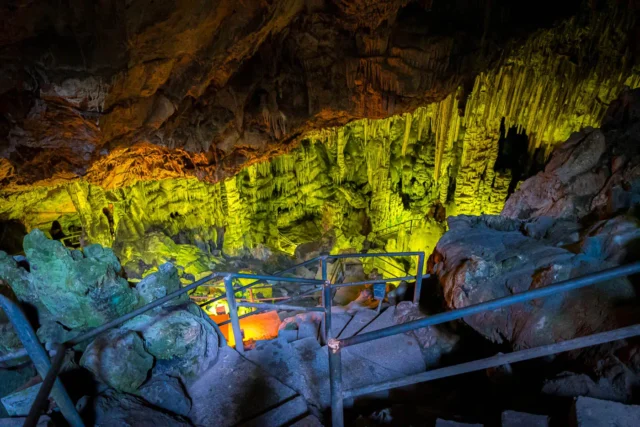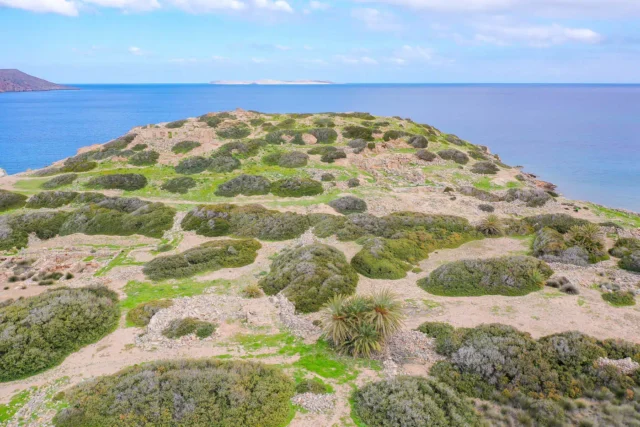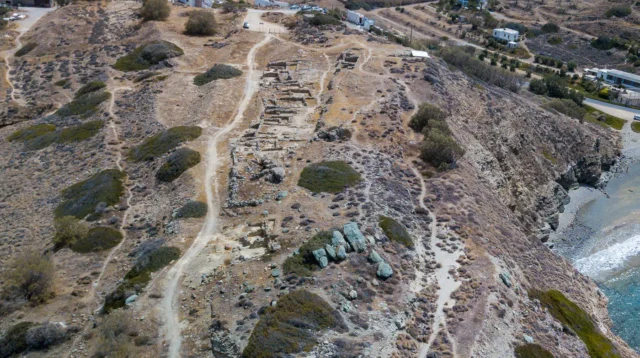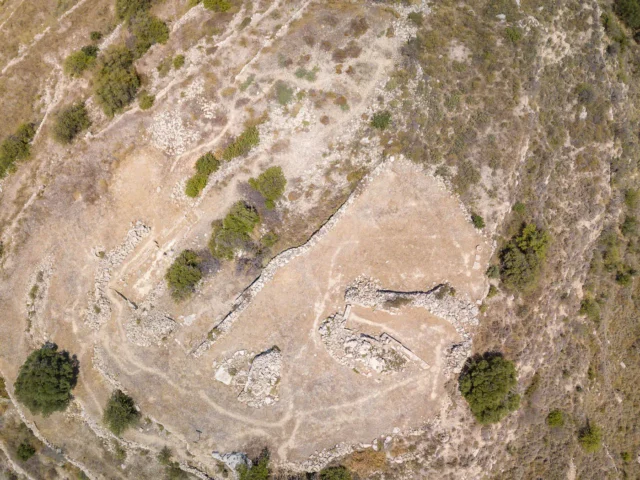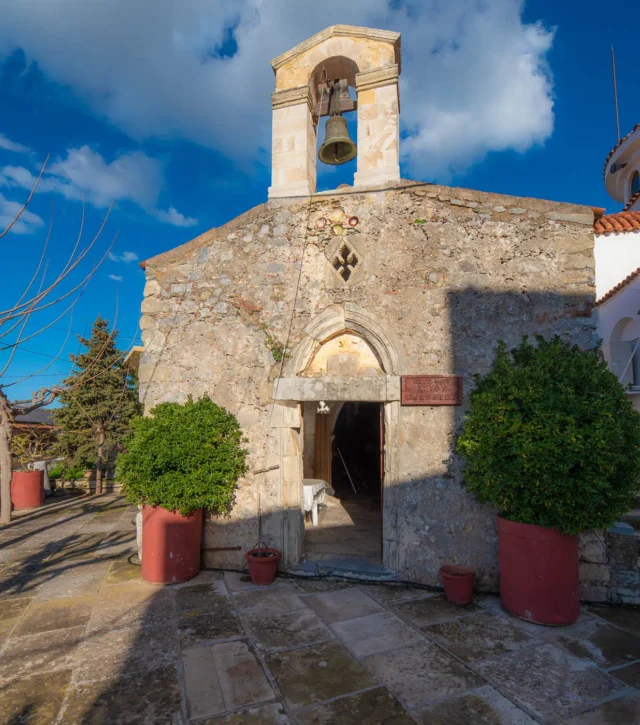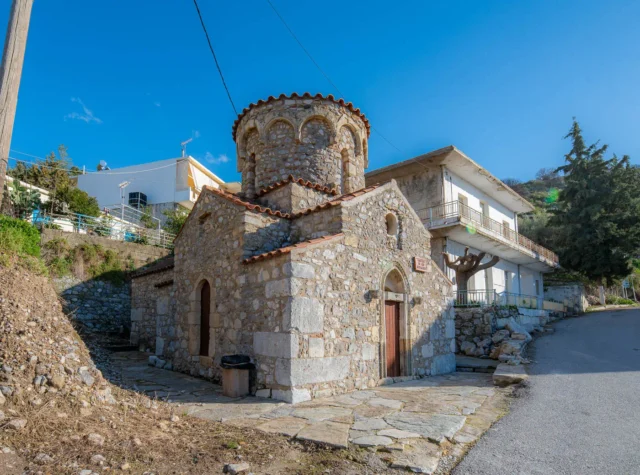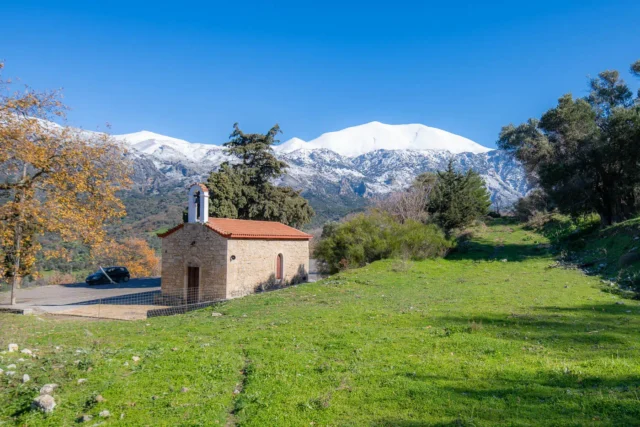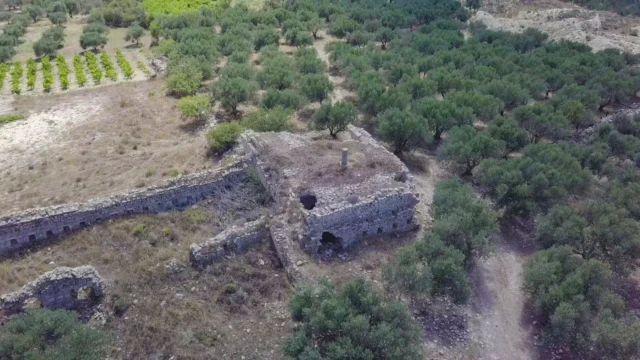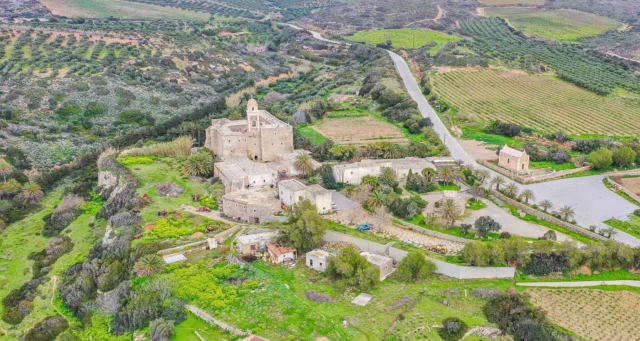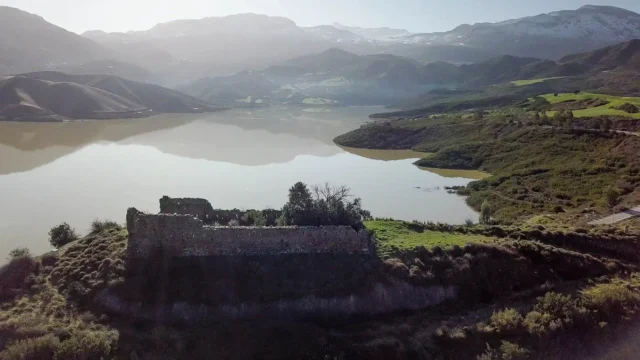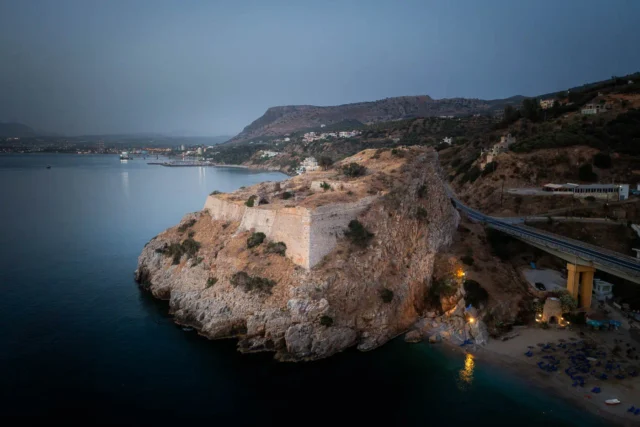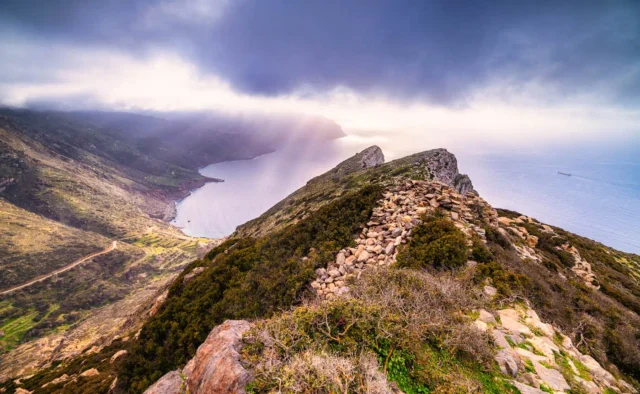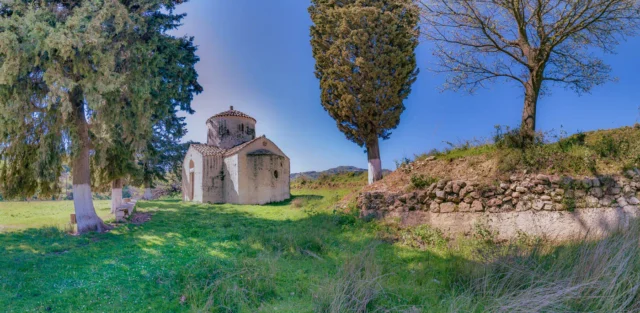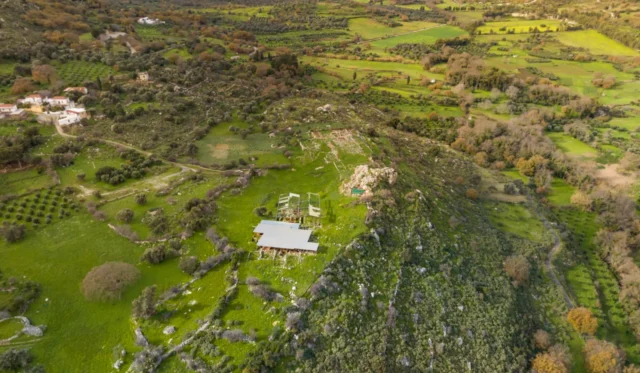829
listings found
Categories
Active filters:
Dikteon Antron cave
Dikteon Antron, also known as Psychro Cave, is a site of significant mythological and archaeological importance located on Mount Dikti in Crete.
The cave's history spans from the Neolithic to the Roman period, primarily as a religious site. In Greek mythology, it is renowned as the birthplace of Zeus.
The cave's interior features a wealth of stalactites and stalagmites, as well as a lake. Archaeological excavations have uncovered artifacts from various periods, attesting to its continuous use by humans. Open to the public, visitors can explore the cave's chambers and witness its geological formations.
Ancient Itanos
Ancient Itanos, a prominent harbor city on Crete's northeastern coast, thrived on trade and cultural exchange. Its strategic location in the eastern Mediterranean facilitated its growth and influence over eastern Crete. The city, built across two adjacent hills, likely housed important sanctuaries. The city center, located between these acropoleis, contains partially excavated building remains. Two additional hills mark the northern and southern boundaries of the city, with the northern hill housing the necropolis and the southern hill featuring defensive walls and towers.
Itanos held a unique position among Cretan cities due to its outward-looking nature and focus on trade. The city prospered well into the Roman period, even minting its own coins. The Northern Necropolis served as the main burial ground, with excavations revealing its use from the late Geometric to the late Hellenistic period. Notable artifacts recovered from Itanos include a marble funerary stele depicting a warrior, now housed in the Agios Nikolaos Museum, and an Ionic capital made of ironstone, suggesting the presence of monumental structures.
Chamezi archaeological site
An archaeological site near Sitia in eastern Crete, known for its unique elliptical house from the Middle Minoan IA period. Discovered in 1903 by Stephanos Xanthoudides and later studied by Costis Davaras, the structure was initially thought to be a peak sanctuary but is now considered a domestic dwelling. The site also contains earlier rural farmhouses from the Early Minoan period. Key features include a central courtyard, a possible domestic shrine where figurines were found, and numerous bronze artifacts.
Trypitos Hellenistic settlement
Located on a promontory 1.5km east of modern Sitia, this site was a small, fortified town that flourished during the Hellenistic period (late 3rd to mid-2nd century BC). Possibly the ancient city of Setaia or Heteia, its strategic position offered natural defenses and access to two harbors. Excavations revealed a well-preserved naval shelter (neosoikos), indicating maritime trade. The discovery of coins marked "ΠΟ" suggests it might be Polichna, an autonomous city-state with its own mint. Its relationship with nearby sites like Petras is still researched. The city likely declined after the mid-2nd century BCE, though its later history is uncertain. It remains an active archaeological site under investigation.
Agia Fotia Minoan Tombs
Minoan Tombs at Agia Fotia, Crete Historical Significance Near the modern village of Agia Fotia, on the northeastern coast of Crete, lies an extensive Minoan cemetery dating to the Early […]
Presos (Praisos) ancient settlement
Located in eastern Crete's Siteia peninsula, this significant archaeological site occupies two hills near the Siteia river. It was a major settlement from the Late Minoan through Hellenistic periods, notably associated with the Eteocretans, considered the original Cretans. Evidence dates back to the Neolithic. Key periods include Late Minoan (tombs, refuge settlements), Archaic (city-state formation, Eteocretan inscriptions), Classical (flourishing inland city-state controlling territory), and Hellenistic (destruction by Hierapytna around 140 BCE). The site saw reoccupation in the Middle Byzantine and Venetian periods. Archaeological finds include Eteocretan inscriptions, LM III tombs, Archaic sanctuaries (Altar Hill), architectural remains (houses, possible Andreion), pottery, and pithoi. The distinct Eteocretan language and identity are crucial aspects. The city lacked walls but had a nearby fort. Agriculture and textile production were likely economic activities.
Panokastri, the Koules of Mylopotamos
Explore the ruins of the Koules of Mylopotamos, a 14th-century Venetian fortress in Crete, and discover the history of the Kallergis family's rebellion.
Toplou monastery
Toplou Monastery, on Crete's eastern tip, is a fortified monastery showcasing Byzantine and Venetian architecture. Dating back to the 14th century with 17th-century fortifications, it played a key role in Cretan resistance during Ottoman rule. The monastery features a two-aisled basilica dedicated to the Virgin Mary, housing a remarkable collection of Byzantine icons and frescoes, and a museum with religious artifacts and folk art. Beyond its religious and historical significance, Toplou Monastery is known for its agricultural heritage, producing high-quality organic wine and olive oil. It stands as a cultural landmark, attracting visitors with its history, architecture, and scenic location, while remaining an active monastery and cultural center.
Koules of Potamoi Dam
Located on a hill west of the Potamoi Dam reservoir in the Amari Valley, Rethymno, this is one of many small Ottoman forts built between 1866 and 1869. This koules was part of a fortification network designed to control the Cretan hinterland, specifically the crucial passage leading to the Messara Plain. The area was known for the Ambadiotes, requiring Ottoman military presence. The rectangular fort (25m x 8m) is a designated preserved monument, with partially preserved exterior walls overlooking the reservoir.
Agios Nikolaos, and Transfiguration of Christ churches in Elenes
In the Amari Valley of Crete, the village of Elenes features the Church of Agios Nikolaos, a dual-aisled Byzantine structure dedicated to St. Nicholas and St. Anne. The church is significant for its extensive cycle of 13th-century frescoes, which portray scenes from the life of Christ and other saints in a style marked by expressive figures and rich colors. Nearby are the ruins of another Byzantine church, dedicated to the Transfiguration of Christ, which also retains fragments of its frescoes.
Palaiokastro Fortress: Guardian of Heraklion Bay
The Palaiokastro Fortress, built by Venetians (1573-1595) on a cliff overlooking Palaiokastro Beach near Heraklion, Crete, defended Heraklion Bay. Its three levels housed powder magazines, a cistern, barracks, and a chapel. The winged lion of St. Mark on its walls signifies Venetian heritage. Captured by Ottomans in the Cretan War (1645-1669), the fortress was documented in the 1900s by G. Gerola. Now partly ruined, it's undergoing restoration.
Liopetro Fortress: A Venetian Stronghold Overlooking the Cretan Sea
A Venetian fortification, also known as Leon di Pietra, located on a cliff near Chamezi village in Sitia, Crete. Proposed in 1579 by Proveditor Giacomo Foscarini, it was built in the early 17th century as a refuge for 6,000 Sitia residents against potential Turkish attacks. It never served this purpose, as the population was relocated to Heraklion. The partially ruined structure includes vaulted cisterns, a church of Saint John, and the chapel of Prophet Elias at its summit.
Koules in Meronas
The Koules of Meronas, also known as the Koules of Apostoli, is a significant 19th-century Ottoman fortification in Crete. Constructed between 1866-1869 at the strategic entrance of the Amari Valley and the exit of the Potamon Valley, its purpose was to monitor and suppress Cretan rebels. The structure was a large, central Koules (Kisla), composed of two buildings with bastions, serving as a military headquarters during the Cretan Revolution of 1866-1869. Though partially ruined, substantial portions of its walls remain.
Agia Paraskevi in Kalogerou
Agia Paraskevi, near Kalogerou in Amari, Crete, is a 16th-century Venetian-era church with a free cross floor plan and a dome on a cylindrical drum. Reconstructed in 1888, it retains original Venetian frescoes, notably in an arcosolium depicting Christ and kneeling figures, including a Georgios Chortatzis. The church's architecture and frescoes, along with the Chortatzis burial, highlight Venetian influence in Crete. The identity of Georgios Chortatzis, possibly linked to archons or a playwright, remains debated. The church is active and open to visitors.
Monastiraki Minoan Palace
Situated in Crete's Amari Valley, a strategic corridor, this site was a significant Minoan Protopalatial administrative center (c. 2100-1700 BC). Covering over 300,000 square meters, it includes large-scale buildings, vast storage areas, workshops, and multiple sealings archives that reveal its economic power. Artifacts, including sealings, show a deep integration into the broader Minoan trade network, with notable connections to the palace at Phaistos.









